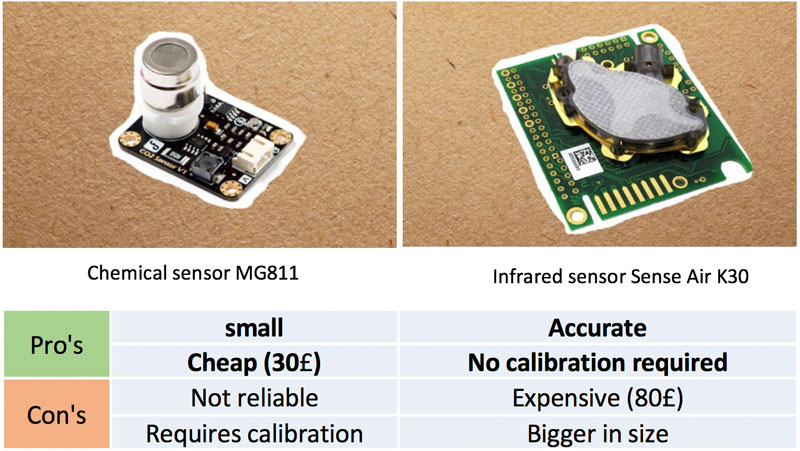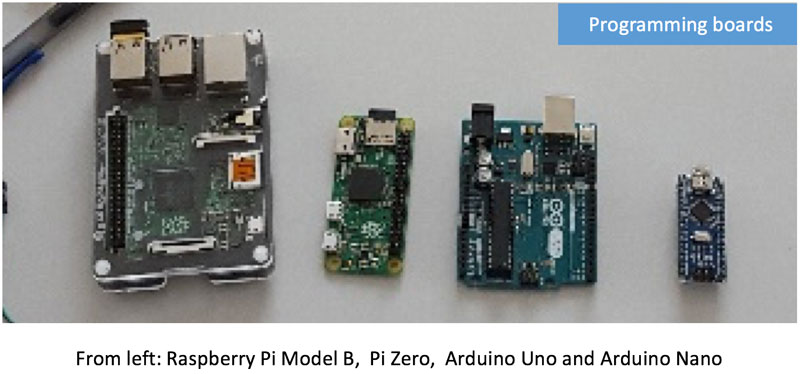AirQuality Meter
UX | Research | Innovation
Context
This project is addressing a challenge connected to low air quality in in-door spaces and has been inspired from a personal experience.
During the university studies a significant amount of time is allocated to individual work which is usually performed in co-working spaces at school or at home after classes. The productivity of work naturally depends on multiple environmental factors such as air, light, temperature etc. that should be well balanced.
The developed device helps to control healthy levels of air quality by providing an ambient visualization of CO2 levels in the room.
Problem space research
From personal observations I noticed that studying at home was less productive and often resulted in states of drowsiness.
I started by brainstorming and doing a literature study that helped to identify the most probable reasons and draw an initial hypothesis.
Preliminary interviews with peers and neighbors helped to gather more information and finally focus on one factor – air quality.
Findings
Research findings show that high concentrations of CO2 have a strong influence on productivity levels and can be a direct cause of drowsiness and poor sleep.

According to the CIBSE the recommended concentrations in UK would be under 1000ppm [1], therefore the designed system would have to be able to accurately measure the concentration of CO2 indoors, provide a visualization of the collected information and engage into meaningful interactions.
Ideation
I started by developing a set of sketches that would represent different ways of building the desired product by experimenting with a number of shapes, forms and visualization options.
For narrowing down the number of ideas I discussed them with my classmates, friends and neighbors. They helped me by giving feedback and sharing valuable insights.
The communication was in the form of semi-structured interviews and focused on collecting the perceptions of the look , feel and interactions with the proposed design concepts.
Qualitative data collection
Out of all designs the majority of interviewees preferred the concept of crystal-like device for being visually appealing and practical. They also clearly envisioned a number of scenarios about how and where they would use it, for instance in a bedroom or in a hospital. Participants also expressed an interest in portability and autonomy which would take away the burden of positioning and configuration.
Shapes
I have experimented with building a number of shapes for the casing using origami techniques. This helped to better understand the look and feel of the design concept both for me and other people.
Based on the feedback a square pyramid shape was selected for its physical and aesthetical properties. The first version was built from paper as it was cheap, fast, easy and flexible way of prototyping. This helped to properly adjust the size of the shape to fit the inner components.
Methods and Materials
A more reliable casing was required and I decided to make it from plastic using laser cutting method that was promising to be fast and efficient. After recording the desired measurements I did a 3D model using Tinkercad. Afterwards I used Autodesk “123D Make” software for converting the 3d model into a compatible one with laser cutter.
In terms of materials I considered frosted or plain white acrylic plastic and selected the latter for being able to better diffuse the light. At the assembly stage, I have discovered that the junctions were not fitting each other. The problem was in the transformation software and even after the second attempt it failed as well.
As an alternative I did 3D printing with white PLA plastic using Ultimaker device, which has resulted in a perfect shape, just as I expected. The only drawback was long amount of time.
Components
The core components required for the functional part were: a CO2 sensor, a programming board and an output device. I have analyzed the use of two types of C02 sensors: chemical and infrared based.

The higher precision and no need for calibration has influenced the decision to select the infrared type of sensor, although at a higher price.
For the programmable board I tried two platforms Raspberry and Arduino. Raspberry Pi is a very advanced platform that supports high level programming languages like python. The drawback of this version was the big size. I have then purchased Raspberry Pi Zero, that featured the same platform at a smaller size but it had a longer booting time. Then I switched to Arduino, which was much easier to setup. I used the Uno version for the first stage of prototyping which was easy to setup, reliable and robust. Since the size was an important factor, the Nano version was chosen for the final product featuring the same functionality as Uno. For the visual output I have used Neopixels stripes.

Assembling
For minimizing the wirings and building a more reliable circuit the pieces had to be soldered together.
I used a perforated PCB protoboard and a soldering iron to connect the components together. The assembly has been made to be easily disassemblable by using pairs of shields and headers.

Testing
After placing all components on the board I have tested the device under different conditions like indoors, outdoors, on the go, in a classroom, library and cafeteria. The collected data was accurate enough and gave very meaningful insights about air quality in those spaces as well as proved the vital necessity of having such a device.
Presentation


The numerical real time data can be visualized by taping an NFC enabled phone to one of the edges. This loads the webpage with a gauge and an interactive timeline graph for real time measurements and history overview. This could be helpful for detecting the noxious factors and investigation of change patterns.







